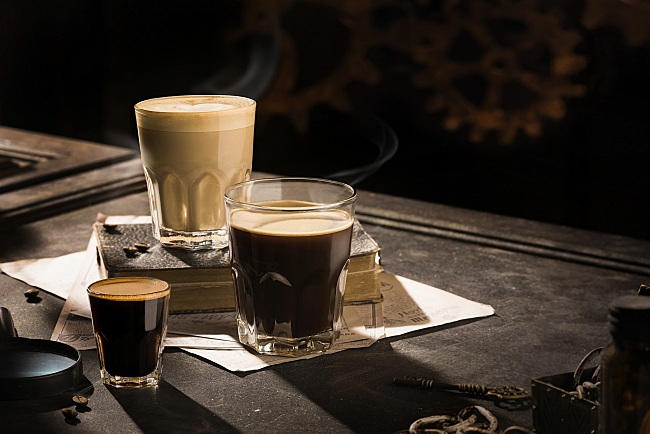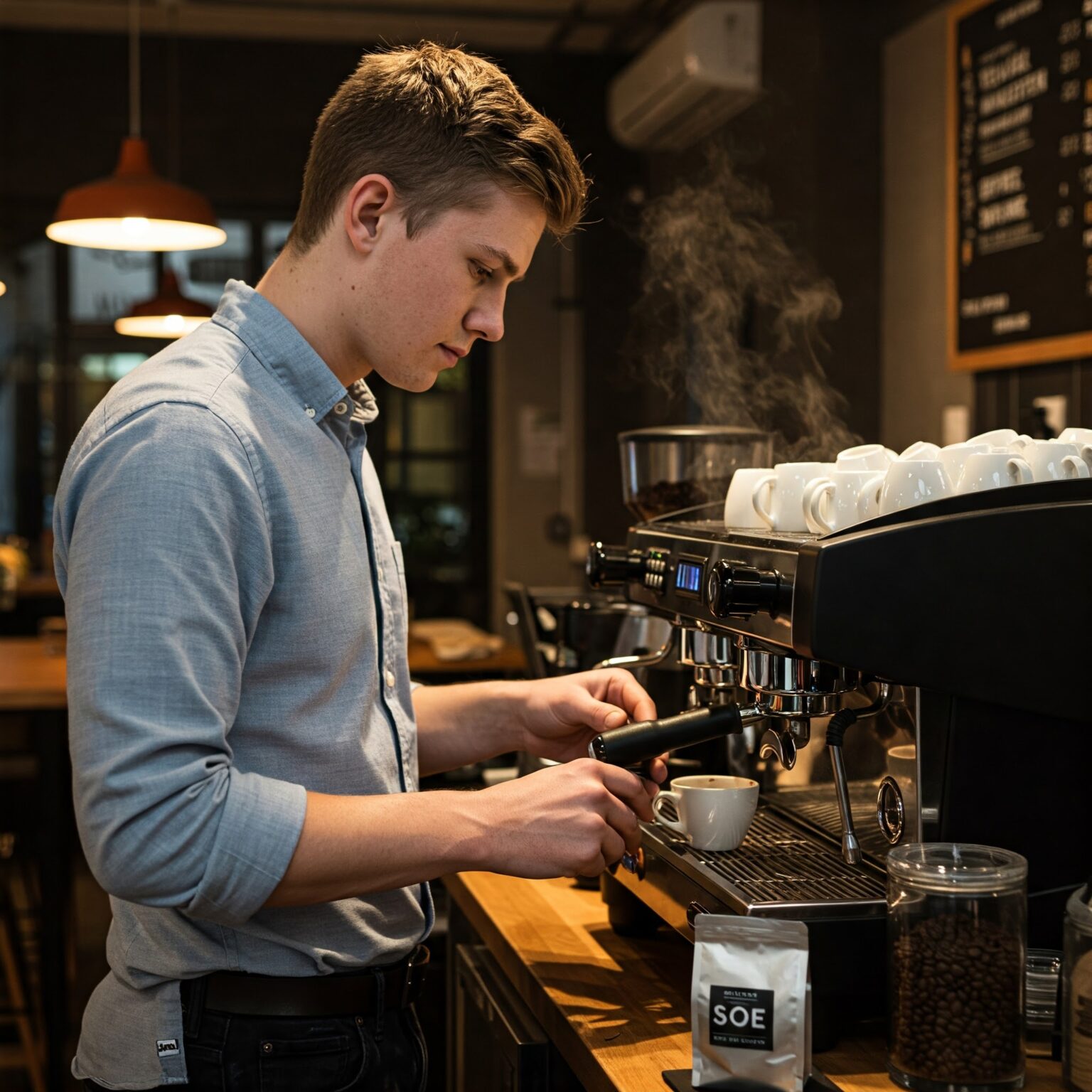Where to copyright SOE Single Origin Espresso Online
Recognizing Coffee Beans: the Trip From Espresso to Blended Coffee Beans

The Origins of Coffee: A Worldwide Perspective
While you may consider coffee as a modern staple, its origins trace back centuries, intertwining with societies across the world. The tale begins in Ethiopia, where tale says a goat herdsman named Kaldi uncovered the invigorating effects of coffee beans after noticing his goats romping vigorously after consuming them. This sparked rate of interest, bring about coffee's infect Arab investors that treasured the made drink. By the 15th century, it got to Persia, Egypt, and Turkey, where coffeehouses ended up being social centers for conversation and society.
As profession courses expanded, coffee made its means to Europe in the 17th century, quickly gaining popularity. Each culture included its distinct twist to coffee prep work, enhancing its history.
Growing and Harvesting of Espresso Beans
As coffee's trip progressed, the focus moved to the cultivation and harvesting of particular bean selections, especially those made use of for espresso. You'll locate that coffee beans typically come from Arabica or Robusta plants, each offering unique tastes. The suitable growing conditions include high elevations and abundant, well-drained soil, which improve the beans' quality.
Throughout the harvest, picking techniques differ. In some regions, employees hand-pick ripe cherries, ensuring just the very best fruit goes to processing. In various other locations, mechanical harvesters are utilized, specifically on larger ranches. Timing is important; you wish to harvest when the cherries reach peak perfection for maximum flavor.
When harvested, the beans are planned for processing, which is necessary in establishing their last taste. Understanding the farming and gathering procedures offers you understanding into what enters into your favorite coffee, enriching your appreciation for each and every mug.
Handling Approaches: From Cherry to Bean
Since you have actually found out regarding harvesting espresso beans, allow's check out just how those cherries transform right into the coffee beans you like. You'll see exactly how various harvesting methods influence flavor, complied with by the necessary steps of fermentation and drying. Finally, we'll damage down the milling and grading process that determines your coffee's quality.
Collecting Methods Clarified
When it comes to coffee, understanding harvesting techniques is crucial, since they directly impact the flavor and quality of the beans you delight in. Selective picking includes hand-picking just ripe cherries, ensuring you get the best top quality beans. Ultimately, the option of harvesting method can substantially influence your coffee experience, so it's worth recognizing how those beans made it to your cup.
Fermentation and Drying
After harvesting, the next actions in handling coffee beans play a significant role in forming their flavor. You'll discover that fermentation is crucial, as it aids break down the mucilage surrounding the beans, enhancing their taste profile. Relying on the method, this process can last from a couple of hours to a number of days, with differing results based upon temperature level and humidity.
Sun-drying permits the beans to absorb flavors from the environment, while mechanical drying out guarantees constant moisture degrees regardless of climate. Proper drying out is important to protect against mold and mildew and preserve the beans' top quality, ultimately affecting your mug of coffee.
Milling and Grading Process
As fermentation and drying established the stage for flavor growth, the milling and grading procedure warranties that just the best coffee beans make it to your mug. This phase includes getting rid of the external layers of the coffee cherry, including the parchment and husk. Premium beans get a greater quality, resulting in a richer coffee experience.
Roasting Techniques: Unlocking Flavor Prospective
When you roast coffee beans, the method you select can substantially affect the taste account. Comprehending the connection between time, temperature, and roasting techniques is crucial to disclosing the capacity of your brew. Allow's discover how these elements collaborated to develop the ideal mug.
Toasting Techniques Clarified
While you could think that all coffee roasting approaches produce the exact same results, the fact is that each strategy discloses unique taste potentials in the beans. You can choose between methods like drum toasting, air roasting, or perhaps traditional pan roasting. Drum roasting makes use of a revolving drum to uniformly distribute warm, boosting caramelization and generating a balanced taste. Air roasting, on the various other hand, circulates hot air around the beans, promoting a lighter roast with pronounced acidity. Frying pan roasting allows for hands-on control but needs consistent interest to stay clear of burning. Each approach has its nuances, so try out various methods can help you find the ideal roast that straightens with your preference preferences. Take pleasure in the trip of locating your suitable mug!

Effect On Flavor Account
Different toasting approaches not only influence the process however likewise greatly influence the taste profile of the coffee beans. When you choose a light roast, you'll experience intense acidity and floral notes, showcasing the bean's origin. In contrast, a medium roast equilibriums acidity with sweetness, frequently disclosing chocolatey touches. Dark roasts, on the other hand, bring out strong, smoky flavors, in some cases covering up the bean's distinct features. Each method exposes various oils and substances, leading to a wide variety of tastes. By trying out numerous roasting designs, you can SOE discover which profiles resonate with your palate. Understanding these nuances helps you appreciate the virtuosity behind your mug of coffee, enhancing your total experience with every sip.
Time and Temperature Aspects
To launch the full flavor possibility of coffee beans, both time and temperature during the roasting process play significant roles. When roasting, you'll locate that greater temperature levels can promptly develop tastes, yet if you hurry it, you may wind up with charred notes. On the other hand, lower temperatures permit for an extra steady flavor development, showcasing the beans' special qualities.

Timing is equally as vital; expanding the roast too long can result in a loss of level of acidity and brightness, while also brief a roast could leave the beans underdeveloped. Discovering that wonderful spot requires practice and trial and error. By adjusting these factors, you can expose the abundant, complex tastes hidden within each bean, producing a really amazing coffee experience.
The Art of Mixing: Crafting Special Coffee Profiles
:max_bytes(150000):strip_icc()/__opt__aboutcom__coeus__resources__content_migration__serious_eats__drinks.seriouseats.com__images__20110830-espresso-main-248fa93e7b7644e3baabac416fd2579c.jpg)
Start by choosing a base coffee that provides a solid structure. A bright Ethiopian bean can bring fruitiness, while a rich Brazilian coffee includes body.
As you blend, maintain in mind that each combination narrates. You're not just making coffee; you're developing an experience. Take your time, preference often, and appreciate the trip of finding your trademark blend - Single Origin Espresso.
Developing Approaches: Just How Preparation Affects Flavor
Blending coffee opens up a domain of flavor possibilities, but how you make that mix can substantially affect your last cup. On the other hand, a pour-over highlights the coffee's quality and brightness, perfect for showcasing fragile notes.
Espresso, with its high stress, creates a concentrated shot that emphasizes sweetness and crema. If you choose a lighter mixture, take into consideration a chilly mixture technique; it generates a smooth, less acidic preference.
Eventually, experimentation is vital. Changing variables like water temperature, grind size, and make time can transform your coffee's profile. Embrace the art of developing to find the flavors concealed in your coffee blends. The right technique can elevate your experience to brand-new heights.
The Future of Coffee: Sustainability and Technology
As the coffee market develops, sustainability and technology are ending up being vital for dealing with ecological difficulties and conference consumer demands. You'll notice that even more coffee business are adopting green methods, from sourcing beans morally to executing lasting farming techniques. These changes not just assist the earth however likewise boost the top quality of the coffee you delight in.
You could see advancements like biodegradable packaging and water-saving developing methods that minimize waste. Advanced technology, such as blockchain, is likewise coming to be popular, making sure openness in the supply chain, which allows you to trace your coffee back to its beginnings.
Additionally, investing in regional areas and supporting farmers with fair profession initiatives cultivates a much more sustainable coffee environment. As you drink your following cup, bear in mind that your options can add to a brighter future for coffee. By going with lasting brand names, you're not just taking pleasure in a drink; you're making a favorable effect on the globe.
Often Asked Questions
What Is the Distinction Between Arabica and Robusta Beans?
Arabica beans are smoother, sweeter, and have a greater acidity, while robusta beans are stronger, more bitter, and contain even more high levels of caffeine. When brewing your coffee., you'll see these distinctions in flavor and aroma.
How Does Elevation Affect Coffee Bean Taste?
Altitude impacts coffee bean taste significantly. Higher altitudes produce beans with brighter level of acidity and complicated tastes, while reduced altitudes usually produce beans that are much heavier and less nuanced. You'll see these differences in your cup!
What Are the Wellness Conveniences of Alcohol Consumption Coffee?
Consuming coffee can improve your energy, improve psychological focus, and even improve physical performance. It's rich in anti-oxidants, may decrease the danger of certain conditions, and can advertise a healthier metabolism when consumed in small amounts.
Can Coffee Beans Be Reused for Brewing?
Yes, you can recycle coffee beans for developing, yet the flavor might be weaker. If you take pleasure in experimenting, attempt reusing them in various means, like cool mixtures or adding to smoothie mixes for an additional kick.
Exactly how Should I Shop Coffee Beans for Quality?
To keep your coffee beans fresh, save them in a closed container in an amazing, dark area. Avoid subjecting them to moisture, light, or warm, as these factors can swiftly degrade their flavor and fragrance.
Understanding Coffee Beans: the Journey From Coffee to Blended Coffee Beans.
Currently that you have actually learned about gathering coffee beans, allow's discover how those cherries transform right into the coffee beans you love.When you roast coffee beans, the technique you select can significantly impact the taste account - Single Origin Espresso.While you could believe that all coffee toasting techniques produce the very same outcomes, the truth is that each technique reveals special taste possibilities in the beans.Various toasting methods not only influence the procedure yet additionally significantly influence the taste account of the coffee beans